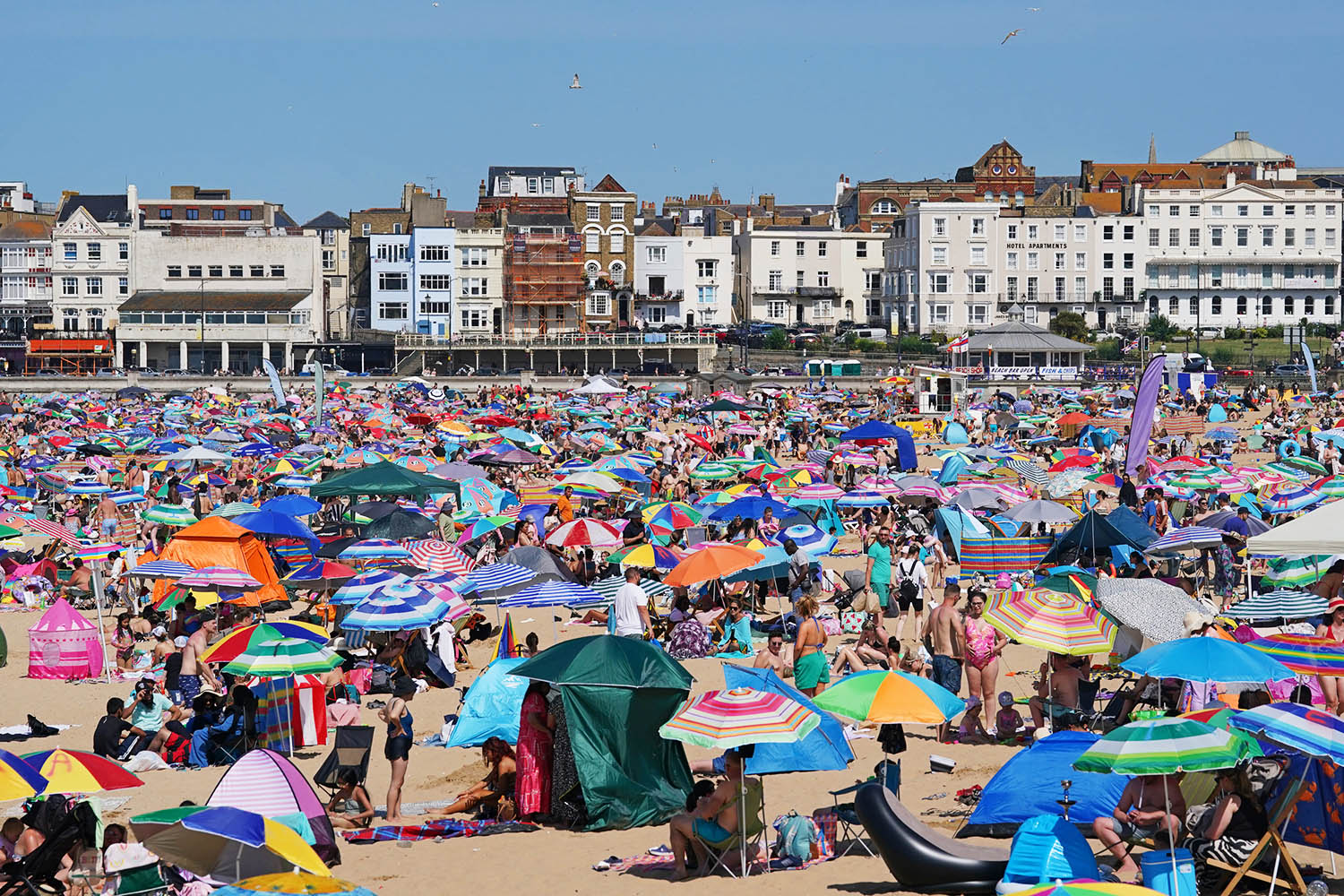Across much of the world, hot weather is a hazard. Brits, on the other hand, still tend to think of it as a treat. Newspapers usher in heatwaves with cheery headlines about “scorchers”.
Even when articles contain warnings, a recent study found, a third still accompany them with happy pictures of beachgoers eating ice cream. A Daily Mail piece reporting on heat deaths in Europe came with a picture of a smiling young woman by a city fountain, her top sporting the logo “hotter than wasabi”.
This ignores the truth: these days, heatwaves are an emergency. In 2022, our hottest summer yet, the weather led to 3,000 “excess deaths”; on average there are 2,000 of these a year – outstripping by far the numbers who die in car crashes. About 600 people are expected to have died as a result of last month’s warm weather. It’s not just heat stroke and dehydration – during a heatwave there are increased suicide rates, too, and 10% more admissions for mental illness. And where heat rises, so does violence.
Heat also harms the economy, as sleepless employees slow down. Every year, heatwaves cost us between £260 to £300m. And things are only due to get more sweltering. By 2050, scorching summers will be about 60% more likely; which every year will cost up to £950m a year, and kill an estimated 10,000.
Some of this could be mitigated if Britain wasn’t stuck in denial. Buildings in the UK, mostly designed before our modern spate of baking summers, are constructed to retain heat rather than let it out. As a result, half of homes are now at risk of overheating.
We aren’t shifting fast enough, even where it would be easy to do so: new buildings rarely fare much better. Tower blocks with panoramic windows are nice on cool days but trap the heat, and, to make things worse, it is hard to open the windows. This is dangerous. A study on deaths in Paris during the heatwave of 2003 found that people living in top floor flats, often the warmest, were more likely to die.
Air conditioning is one solution, but it is still treated with scepticism in the UK: each year, there are baffled articles in US newspapers revealing that Brits don’t do air con – perhaps 5% of our homes have it. Net-zero-focused politicians tend not to advocate for it, on the basis that it could exacerbate the problem it is treating. In London, for example, Sadiq Khan’s local planning rules state that air con is “not desirable” as it has “significant energy requirements and, under conventional operation, expel hot air, thereby adding to the urban heat island effect”.
But here the UK is treating itself as an exception: Britons are asked to swelter for the sake of the planet, but no one else is doing so. Other countries with hot cities fit air conditioners as standard. Meanwhile, a UK government grant offers to help those installing heat pumps, but not the sort that can cool buildings in the summer as well as heating them in the winter.
Being told you’re at risk is only so useful if you’re stuck in an overheated house
If air conditioning did become more widespread, it would run up against another hurdle: Britain’s electricity system has been designed to meet peak demand during the winter months, and that may need to change. Power cables are clad in rubber or aluminium, which expand in the heat.
Railways are another problem – high temperatures cause steel tracks to buckle. In Spain and France, the steel is treated differently. Drought is a growing issue.
Upgrading our infrastructure would be hugely expensive, which may explain some of the inertia. One estimate by an architectural firm reckons that heat-proofing British homes would cost £250bn. But the investment will be worth it: every £1 spent on adapting to climate change is estimated to save between £2 and £10. The earlier Britain starts, the better. A recent report by the Climate Change Committee finds that the gap between risk and adaptation has grown since 2016.
Warning people, on the other hand, is cheap: as heat risks increase, this is likely to be the first lever the government pulls. It currently issues “heat alerts” by email – but only if you sign up for these on their website. One idea ventured by academics would be to name heatwaves in the same manner as we do winter storms. Something needs to shift our tradition of being out in the midday sun.
But being told you’re at risk is only so useful when you are stuck sleeping in an overheated house on a treeless street. Britain has a habit of pushing structural problems onto individuals – last year, the Conservative government advised us to “stockpile baked beans” in order to guard against global threats.
Sporadic hosepipe bans have long been Britain’s answer to its dwindling water supply – in 25 years we will need almost 5bn additional litres of water a day. But, despite a steady rise in the population, we haven’t built a single reservoir in the past 30 years. Hosepipes are not the problem.
At present, adaptation is haphazard. Each year, the heatwaves are capable of surprising us. In 2022, dealing with their worst effects was largely left to the emergency services. Guidance suggests a standard minimum for workplace temperatures – but no maximum. Some schools send pupils home when the mercury hits a certain point, but others do not.
Different regions and local councils opt to deal with the heat in different ways, according to taste. Importantly, there are no penalties for failing to measure up.
Repeated analyses have recommended a government strategy to coordinate all this – in 2023, the National Audit Office found that the government was unable to identify any examples of funding to manage the risk of high temperatures. It’s time that changed.
Photograph by Gareth Fuller/PA

